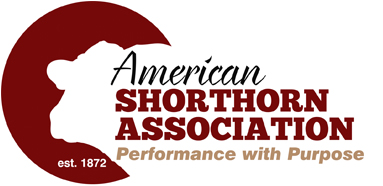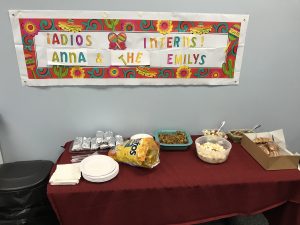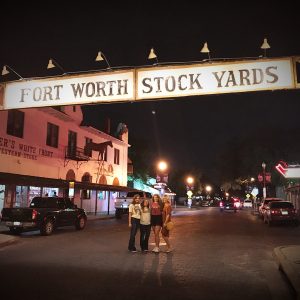See the 2018-2019 Show Region Winners below. The detailed report will be in the May/June issue of Shorthorn Country.
National Shorthorn Show Female of the Year: Steck Chelsie C 704 ET, Riley Johnson, Jackson, MN.
National Shorthorn Show Bull of the Year: TJH Bo’s Maxim H7, Crow Creek Farms, Lawton, OK.
National ShorthornPlus Show Female of the Year: SULL Black Cherri 7217E ET, Jake Brandt, Clarion, IA.
National ShorthornPlus Show Bull of the Year: CCF Nicholas C59E, Crow Creek Farms, Lawton, OK.
Northeast Region Winners:
Shorthorn Female of the Year: CF V8 Mona Lisa Reward 782 SOL ET, Ryan Wickard, Wilkinson, IN.
Shorthorn Female Runner-Up: Midnight Madison 716, Annette Braun, Mechanicsville, MD.
Shorthorn Female Division Winners:
Early Spring Heifer Calf Champion- HAA Fantasies Halo ET, Todd DeGasperi
Senior Heifer Calf Champion- SULL Myrtle 7655E ET, April Troyer
Senior Heifer Calf Reserve Champion- M&L Misty’s Deception 1217, Landon Helmke
Intermediate Champion Female- Midnight Madison 716. Annette Braun
Intermediate Reserve Champion Female- Don Amber 520 ET, April Troyer
Junior Champion Female- CF V8 Mona Lisa Reward SOL ET, Ryan Wickard
Junior Reserve Champion Female- Armstron Queen 1704 ET, Benjamin Allen
Senior Champion Female- SULL Rose’s Legacy 7102E ET, Kolten DeGasperi
Senior Reserve Champion Female- SS Ocean Mirage 714 ET, Marsch Show Cattle
Shorthorn Bull of the Year- Armstrong Easy Rider 1603, John M. Allen, IV, Saxonburg, PA.
Shorthorn Bull Runner-Up- GLF Spirit Fusion, Henry Dodrer, Jr., Westminster, MD.
Shorthorn Bull Division Winners:
Senior Bull Calf Champion- GLF Spirit Fusion, Henry Dodrer, Jr.
Junior Champion Bull- MVF Hot Rod, Masonic Village Farm
Senior Champion Bull- Armstrong Easy Rider 1603, John M. Allen, IV
ShorthornPlus Female of the Year- HAA Ebony, Kolten DeGasperi, Westminster, MD.
ShorthornPlus Female Runner-Up- Burgess Red Ivy 27017 ET, Annette Braun, Mechanicsville, MD.
ShorthornPlus Division Winners:
Junior Champion Female- HAA Ebony, Kolten DeGasperi
Junior Reserve Champion Female- Burgess Red Ivy 27017 ET, Annette Braun
ShorthornPlus Bull of the Year- Harmony White Storm, Annette Braun, Mechanicsville, MD.
Junior Bull Calf Champion- Harmony White Storm, Annette Braun
Southeast Region Winners:
Shorthorn Female of the Year: GCC Evolution Charm 7102 ET, Kolten Greenhorn, Bellbrook, OH.
Shorthorn Female Runner-Up: RFSS Roan Margie ET, Evea Ennis, Martinsville, IN.
Shorthorn Female Division Winners:
Early Spring Heifer Calf Champion- CF TF No Foolin 897 UR X ET, Camryn Clapp
Early Spring Heifer Calf Res. Champion- Bratcher Myrtle Bo 812 ET, Craig Bratcher
Junior Heifer Calf Champion- GAF Miss Sassy 2518, Jake Ozburn
Junior Heifer Calf Reserve Champion- Martindell Dreams 801, Austin Martin
Senior Heifer Calf Champion- Martindell Lily 787, Austin Martin
Intermediate Champion Female- GCC Evolution Charm 7102 ET, Kolten Greenhorn
Intermediate Reserve Champion Female- RFSS Roan Margie ET, Evea Ennis
Junior Champion Female- VSC Fancy Margie 60, Mitch Williams
Senior Champion Female- RFSS Roan Sis, Mattie Williams
Senior Reserve Champion Female- VSC Destiny Best Asset 57, Molly Williams
Shorthorn Bull of the Year- EGL Neptune MX 759, Evea Ennis, Martinsville, IN.
Shorthorn Bull Runner-Up- Armstrong Easy Rider 1603, John M. Allen, IV, Saxonburg, PA.
Shorthorn Bull Division Winners:
Early Spring Bull Calf Champion- VVCC Rocky, Valley Vista Farms
Early Spring Bull Calf Res. Champion- DFF Revolution, Lanie Sutherland
Junior Bull Calf Champion- White Lightning 21MV ET, Cheyenne Cattle Company
Senior Bull Calf Champion- EGL Neptune MX 759, Evea Ennis
Senior Bull Calf Reserve Champion- MFK Last Dance 387K X, Maurice & Faye Korthaus
Intermediate Champion Bull- VCC Ain’t No Foolin’ 1701 ET, Vollborn Cattle Company & Cedar Lane Farm
Senior Champion Bull- Armstrong Easy Rider 1603, John M. Allen, IV
Senior Reserve Champion Bull- MFK Hot Rebel 26K X, Wesley Maurice Korthaus
ShorthornPlus Female of the Year- 4D Mae Lynn D21E, Rachel Drumm, Winchester, KY.
ShorthornPlus Female Runner-Up- Martindell Lily 839, Austin Martin, Tompkinsville, KY.
ShorthornPlus Division Winners:
Junior Heifer Calf Champion- Martindell Lily 839, Austin Martin
Intermediate Champion Female- Circle J Mabel 005E, Austin Martin
Junior Champion Female- SharBen Lil Miss Can’t Be Wrong, Adymae Williams
Senior Champion Female- 4D Mae Lynn D21E, Rachel Drumm
North Central Region Winners:
Shorthorn Female of the Year: DSF Esther 4F, Nathan Studer & Jenny Sruder, Creston, IA.
Shorthorn Female Runner-Up: Bergs Sweet Katie, Madeline Berg, Osage, IA.
Shorthorn Female Division Winners:
Early Spring Heifer Calf Champion- DVW 24 Roses 318, Wasinger Cattle Company
Junior Heifer Calf Champion- DSF Esther 4F, Nathan Studer & Jenny Studer
Junior Heifer Calf Res. Champion- Bergs Crystal’s Sally, Lauren Berg
Senior Heifer Calf Champion- Homedale June Rosewood 7806, Samantha Jo Jabs
Senior Heifer Calf Res. Champion- Homedale June Rosewood 7789, Lane Thomas Jabs
Intermediate Champion Female- Bergs Sweet Katie, Madeline Berg
Intermediate Res. Champion Female- Homedale MLS Max Rosa 7790, Elizabeth Jabs
Junior Champion Female- DSF Missie 104E, Rose Family
Senior Champion Female- DSF Sonya 11E, Brock David Studer
Shorthorn Bull of the Year: JS Continental Divide, Blake Lehman, Eureka, IL & James R. Johnson, Niantic, IL.
Shorthorn Bull Runner-Up: 6B’s Guardian ET, 6B Farms, Allison, IA.
Shorthorn Bull Division Winners:
Early Spring Bull Calf Champion- Bergs Red Duke, Madeline Berg
Early Spring Bull Calf Res. Champion- Studer’s Forsyth 65F. Nathan Studer & Jenny Studer
Junior Bull Calf Champion- Studer’s Fairgame 6F, Brock David Studer
Junior Champion Bull- JS Continental Divide, Blake Lehman & James R. Johnson
Senior Champion Bull- 6B’s Guardian ET, 6B Farms
ShorthornPlus Female of the Year- SULL Black Cherri 7217E ET, Jake Brandt, Clarion, IA.
ShorthornPlus Female Runner-Up- WGR Midnight Mirgage 708E, Mikayla Wetzel, Faribault, MN.
ShorthornPlus Division Winners:
Junior Heifer Calf Champion- 6B Nan 18, 6B Farms
Intermediate Champion Female- WGR Midnight Mirgage 708E, Mikayla Wetzel
Junior Champion Female- SULL Black Cherri 7217E ET, Jake Brandt
South Central Region Winners:
Shorthorn Female of the Year: SULL Lucy 7686E ET, Dayson Cash, Fay, OK.
Shorthorn Female Runner-Up: RSF Simply Dessert Rose 3E, Ryan Lane, Siloam Springs, AR.
Shorthorn Female Division Winners:
Late Spring Heifer Calf Champion- 2GS Cumberland 523F, Garrison Spooner
Early Spring Heifer Calf Champion- M&E Mary’s Cumberland 952, M & E Shorthorns
Early Spring Heifer Calf Res. Champion- JVCC Miss Margie, Luke Jones
Junior Heifer Calf Champion- LDB Magic Rain 801 ET, Brittany Blankinship
Junior Heifer Calf Res. Champion- M&E Cumberland 948, M & E Shorthorns
Senior Heifer Calf Champion- SULL Lucy 7686E ET, Dayson Cash
Senior Heifer Calf Res. Champion- WHR Queen of Sonny 7N15 ET, Carolyn Norris
Intermediate Champion Female- RSF Simply Dessert Rose 3E, Ryan Lane
Intermediate Res. Champion Female- AF Lassies Rose 1725, Merideth Behrens
Junior Champion Female- Simple Brilliance, Lane Blankinship
Junior Res. Champion Female- LH Dee Licious 0317, L H Show Cattle
Senior Champion Female- DTR Mona Lisa 701E, Josie Heter
Senior Res. Champion Female- TRN Foxxy 687 ET, Graham Spooner
Shorthorn Bull of the Year: TJH Bo’s Maxim H7, Crow Creek Farms, Lawton, OK.
Shorthorn Bull Runner-Up: Fieser’s Mr. Impact 517, Dayson Cash, Fay, OK & Fieser’s Polled Shorthorns, Plains, KS.
Shorthorn Bull Division Winners:
Early Spring Bull Calf Champion- DCL Margie’s Swagger, Dayson Cash
Junior Bull Calf Champion- J&M Maxim Silver ET, J & M Shorthorns
Senior Bull Calf Champion- Fieser’s Ranger, Cash-Farms Shorthorns
Senior Bull Calf Reserve Champion- K’s Zepplin 717, L H Show Cattle
Intermediate Champion Bull- Fieser’s Rookie, Cash-Farms Shorthorns
Junior Champion Bull- Fieser’s Mr. Impact 517, Dayson Cash & Fieser’s Polled Shorthorns
Senior Champion Bull- TJH Bo’s Maxim H7, Crow Creek Farms
ShorthornPlus Female of the Year: JVCC Red Diamond 701, Kadin Kinder Worthington, El Reno, OK.
ShorthornPlus Female Runner-Up: Miss Star Knite, Kadin Kinder Worthington, El Reno, OK.
ShorthornPlus Division Winners:
Early Spring Heifer Calf- Ms. Annie, Ashlyn Larman
Junior Heifer Calf Champion- LDB Cowgirl’s Phoebe 805, Lane Blankinship
Junior Heifer Calf Res. Champion- CCF Violet C01F, Buck Downum
Senior Heifer Calf Champion- AJC Classy Stella, AJ Show Cattle
Senior Heifer Calf Res. Champion- LDB Reckless Mulan 803, Lane Blankinship
Intermediate Champion Female- Miss Star Knite, Kadin Kinder Worthington
Intermediate Res. Champion Female- DTR Ruby Rock Candy 758E, Josie Heter
Junior Champion Female- JVCC Red Diamond 701, Kadin Kinder Worthington
Junior Res. Champion Female- Ms. Laney, Ashlyn Larman
Senior Champion Female- CCR Pepper, Madyson Nunn
ShorthornPlus Bull of the Year: CCF Nicholas C59E, Crow Creek Farms, Lawton, OK.
ShorthornPlus Bull Runner-Up (TIE): FSC Mr. Fireball, Brett Forgy, Caddo, OK
CRC Little Boy Blue 12D, TSW Cattle, Marlow, OK
Early Spring Bull Calf Champion- FSC Mr. Fireball, Brett Forgy
Junior Bull Calf Champion- CCF Paxton C14F, Crow Creek Farms
Senior Bull Calf Champion- CCF Nicholas C59E, Crow Creek Farms
Senior Champion Bull- CRC Little Boy Blue 12D, TSW Cattle
West Region Winners:
Shorthorn Female of the Year: LC Augusta Pat 2728, Catherine Heather, Sanger, CA
Shorthorn Female Runner-Up: LC Augusta Pat 2817, Don Cardey, Turlock, CA
Shorthorn Female Division Winners:
Early Spring Heifer Calf Champion- LC Augusta Pat 2817, Don Cardey
Junior Heifer Calf Champion- LC Augusta Pat 2728, Catherine Heather
Junior Heifer Calf Res. Champion- LC Welcome Lady 2704, Don Cardey
Senior Heifer Calf Champion- JT Betty Angel 2564, J T Ranch
Senior Heifer Calf Res. Champion- LC Augusta Pat 2667, Don Cardey
Intermediate Champion Female- GSC Rosie Ransom 2503, Greg Cardey
Intermediate Reserve Champion Female- JT Betty Angel 2472, J T Ranch
Junior Champion Female- LC Augusta Pat 2385, Don Cardey
Junior Reserve Champion Female- JT Betty Angel 2334, J T Ranch
Senior Champion Female- GSC Princess 2222, Greg Cardey
Senior Reserve Champion Female- LC Funny Face 2300, Don Cardey
Cow/Calf Champion- GSC Sweetheart 1311, Greg Cardey
Reserve Cow/Calf Champion- LC Augusta Pat 1383, Don Cardey
Shorthorn Bull of the Year: GSC Studer 2259, Greg Cardey, Turlock, CA.
Shorthorn Bull Runner-Up: GSC Gold Label 2148, Greg Cardey, Turlock, CA.
Shorthorn Bull Division Winners:
Early Spring Bull Calf Champion- GSC Studer 2865, Greg Cardey
Junior Bull Calf Champion- LC Gold Label 2685, Don Cardey
Junior Bull Calf Res. Champion- JT Studer 2725, J T Ranch
Senior Bull Calf Champion- GSC Gold Label 2585, Greg Cardey
Senior Bull Calf Res. Champion- LC Studer 2563, Don Cardey
Intermediate Champion Bull- LC Studer 2464, Don Cardey
Intermediate Res. Champion Bull- GSC Studer 2419, Greg Cardey
Junior Champion Bull- GSC Studer 2259, Greg Cardey
Junior Reserve Champion Bull- LC Gold Label 2263, Don Cardey
Senior Champion Bull- GSC Gold Label 2148, Greg Cardey
ShorthornPlus Female of the Year: PHF Idaho Duchess 294E, Arielle Phillips, Caldwell, ID
Intermediate Champion Female- PHF Idaho Duchess 294E, Arielle Phillips








![[ Random Image ]](/wp-content/themes/shorthorn/headers/header6.jpg)
 Our names are Wade, Wyatt, and Faith and we will be your entertainment (interns) for this summer’s tour. The biggest show of the year is scheduled in Lebanon, Tennessee, on June 17. We have been very busy preparing for the performance of the year and we’re ready for a week of “Strumming a Shorthorn Tune!” Our band members and stage crew here at ASA are excited for a fun filled week and can’t wait for the final performance!
Our names are Wade, Wyatt, and Faith and we will be your entertainment (interns) for this summer’s tour. The biggest show of the year is scheduled in Lebanon, Tennessee, on June 17. We have been very busy preparing for the performance of the year and we’re ready for a week of “Strumming a Shorthorn Tune!” Our band members and stage crew here at ASA are excited for a fun filled week and can’t wait for the final performance!
